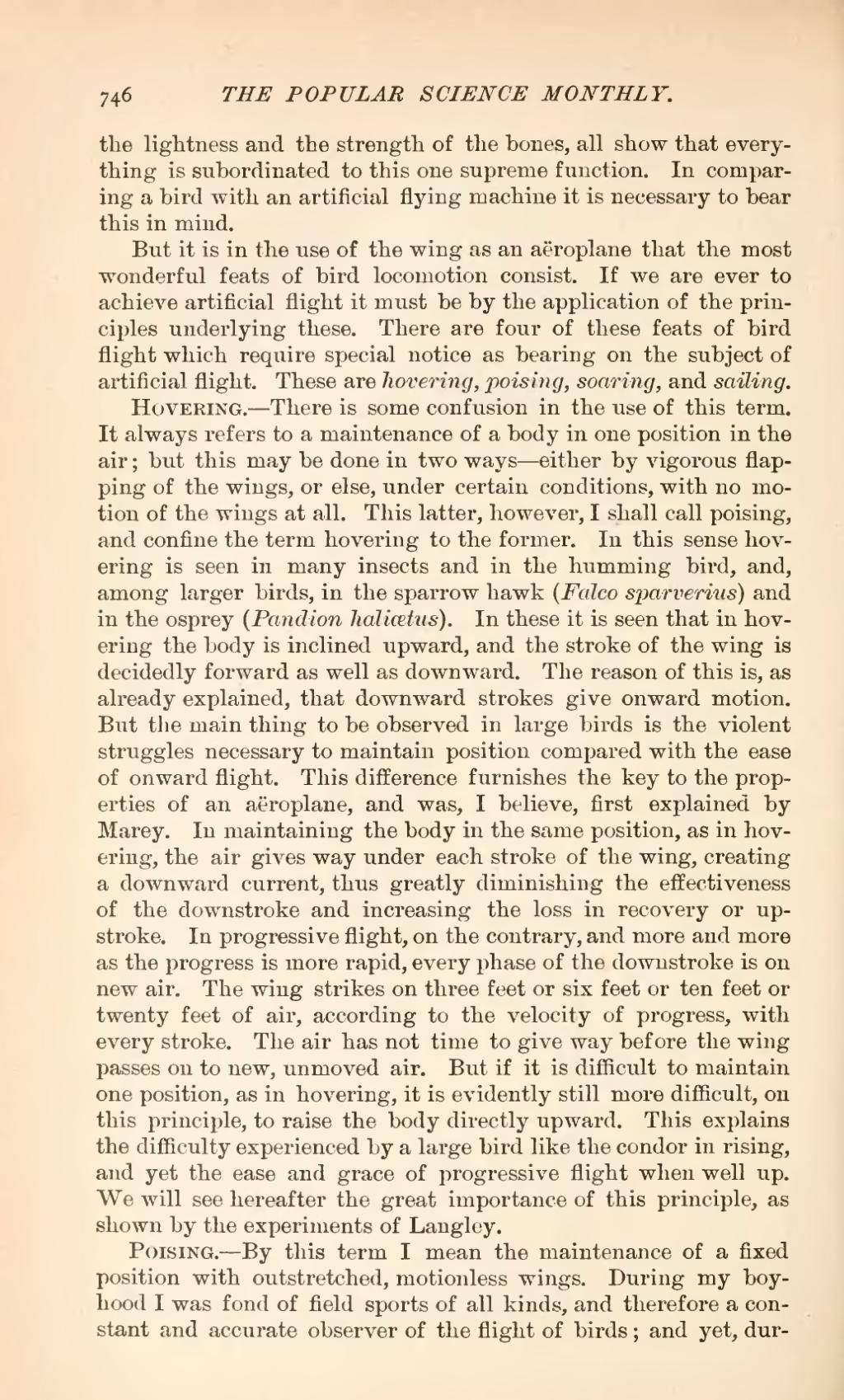the lightness and the strength of the bones, all show that everything is subordinated to this one supreme function. In comparing a bird with an artificial flying machine it is necessary to bear this in mind.
But it is in the use of the wing as an aëroplane that the most wonderful feats of bird locomotion consist. If we are ever to achieve artificial flight it must be by the application of the principles underlying these. There are four of these feats of bird flight which require special notice as bearing on the subject of artificial flight. These are hovering, poising, soaring, and sailing.
Hovering. There is some confusion in the use of this term. It always refers to a maintenance of a body in one position in the air; but this may be done in two ways either by vigorous flapping of the wings, or else, under certain conditions, with no motion of the wings at all. This latter, however, I shall call poising, and confine the term hovering to the former. In this sense hovering is seen in many insects and in the humming bird, and, among larger birds, in the sparrow hawk (Falco sparverius) and in the osprey (Pandion haliætus). In these it is seen that in hovering the body is inclined upward, and the stroke of the wing is decidedly forward as well as downward. The reason of this is, as already explained, that downward strokes give onward motion. But the main thing to be observed in large birds is the violent struggles necessary to maintain position compared with the ease of onward flight. This difference furnishes the key to the properties of an aëroplane, and was, I believe, first explained by Marey. In maintaining the body in the same position, as in hovering, the air gives way under each stroke of the wing, creating a downward current, thus greatly diminishing the effectiveness of the downstroke and increasing the loss in recovery or upstroke. In progressive flight, on the contrary, and more and more as the progress is more rapid, every phase of the downstroke is on new air. The wing strikes on three feet or six feet or ten feet or twenty feet of air, according to the velocity of progress, with every stroke. The air has not time to give way before the wing passes on to new, unmoved air. But if it is difficult to maintain one position, as in hovering, it is evidently still more difficult, on this principle, to raise the body directly upward. This explains the difficulty experienced by a large bird like the condor in rising, and yet the ease and grace of progressive flight when well up. We will see hereafter the great importance of this principle, as shown by the experiments of Langley.
Poising. By this term I mean the maintenance of a fixed position with outstretched, motionless wings. During my boyhood I was fond of field sports of all kinds, and therefore a constant and accurate observer of the flight of birds; and yet, dur-
